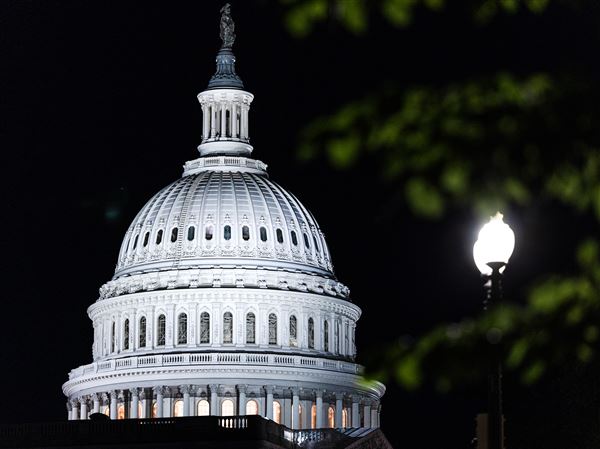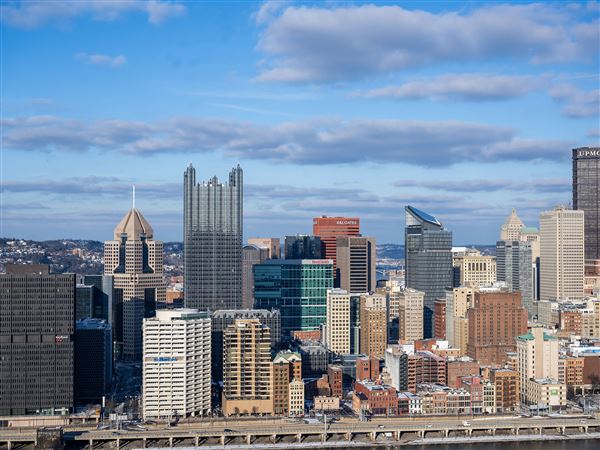There have been five mass extinctions over the last oh, half a billion years or so. But the sixth — the one that is smack upon us now whether we know it or not, and that we humans have done more than our share to kick-start — is going to be a doozy.
Author Elizabeth Kolbert delivers that bad news in her very good book, “The Sixth Extinction: An Unnatural History,” a globe-trotting adventure to a fascinating, but ultimately terrifying, future Earth, where man is both villain and potential victim.
Where: Carnegie Music Hall, 4400 Forbes Ave., Oakland
When: 7:30 p.m. Monday
Tickets: $15-$35, 412-622-8866 or www.pittsburghlectures.org
The 54-year-old author, whose savvy, well-researched and sweetly distilled writing about science and climate change has graced the pages of The New Yorker since 1999, is in Pittsburgh Monday to speak at the Pittsburgh Arts & Lectures Literary Evenings, Monday Night Lecture Series at Carnegie Music Hall in Oakland. The event is sponsored by Carnegie Library and the Pittsburgh Contemporary Writers Series.
“The Sixth Extinction” is Ms. Kolbert’s third book and won the 2015 Pulitzer Prize for general nonfiction. She also is the author of “The Prophet of Love: and Other Tales of Power and Deceit” and, in 2006, “Field Notes From a Catastrophe: Man, Nature, and Climate Change,” the springboard to “Extinction.”
“The last book was primarily about climate change, and this one is climate change and more; more ways that humans are changing the planet,” she said in a phone interview earlier this month. “People were coming up to me after the first one came out and asking why I didn’t include all these other things, so I guess you could say this book grew out of that one.”
In “Extinction” she writes of the forever passings of tiny creatures and massive megafauna, deftly weaving prehistoric threads with new scientific discoveries and insightful personal observations made on treks to the front lines of the extinction battle. She tracks the historic demise of ammonites and mastodons near Rome and in Paris, and splashes up a creek at night to see the fast disappearing golden frogs of Panama. She spends time in the Cincinnati Zoo with one of the few remaining Sumatran rhinos left in the world, and mourns over the matchstick bones of dead bats, piled like a crunchy carpet in caves throughout the Northeastern U.S. On Australia’s Great Barrier Reef she snorkels over corals, bleached dead white by ocean acidification.
Given what she has learned and seen of creatures gone and going, she admits to feeling a responsibility to write this book.
“It sort of did become that. On those occasions when I wanted to give up in despair I recognized I had an obligation to bring the book to completion, both to the world at large and to the people and scientists who gave a lot of their time,” she said. “They wanted the information out.”
Although she has been called a pessimist, she thinks of herself as a journalist and a realist who holds out what passes for hope in the book’s cliffhanger ending.
“Right now,” Ms. Kolbert writes, “in the amazing moment that to us counts as the present, we are deciding, without quite meaning to, which evolutionary pathways will remain open and which will forever be closed. No other creature has ever managed this, and it will be our most enduring legacy.
“The Sixth Extinction will continue to determine the course of life long after everything people have written and painted and built has been ground into dust and giant rats have — or have not — inherited the earth.”
So a future filled with giant rats?
“The rats are tongue in cheek. I don’t think we’ll eventually be ruled by giant rats,” she said. “But I think my basic point is there: Will we live in a world where only those species that can survive in a very disturbed landscape will remain? That’s where we’re heading and the whole point of the book is to bring that to people’s attention.”
Consider yourself warned.
Don Hopey: dhopey@post-gazette.com, 412-263-1983 or on Twitter @donhopey.
First Published: November 15, 2015, 5:00 a.m.

















